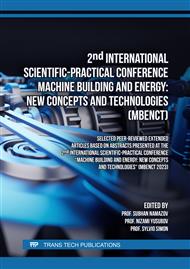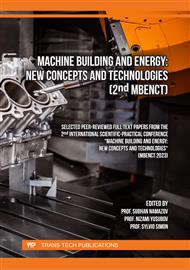p.69
p.77
p.87
p.95
p.103
p.113
p.127
p.135
p.141
Application of Difference Equations in Automated Production Control Systems Using Abstract Discrete Automatons
Abstract:
The application of abstract discrete automatons in automated production control systems represents a significant stride towards achieving enhanced precision, flexibility, and efficiency in manufacturing processes. One of the standout advantages of using abstract discrete automatons is the ability to achieve precise control over production processes. These systems excel in modeling complex discrete event systems, allowing for real-time adaptation to changing conditions. This adaptability is invaluable in industries where production requirements and parameters can shift rapidly. Through the careful design and deployment of difference equations, automated production control systems can optimize the utilization of resources. The integration of abstract discrete automatons enables a high degree of quality assurance. Complex system design, integration issues, and the need for skilled personnel are among the hurdles that must be addressed. The synergy between mathematical models and automation technologies holds immense potential for optimizing production processes across various sector. The implementation of difference equations and abstract discrete automatons in automated production control systems marks a significant step towards advancing manufacturing efficiency. These mathematical and computational tools provide a robust framework for optimizing processes, reducing waste, and enhancing overall productivity. Abstract discrete automatons excel in handling complex, real-time changes, making them well-suited for industries where adaptability to shifting demands and conditions is paramount. By leveraging mathematical models and automation, production processes can achieve a level of precision and consistency that is challenging to attain through manual control.
Info:
Periodical:
Pages:
103-111
Citation:
Online since:
April 2024
Authors:
Price:
Сopyright:
© 2024 Trans Tech Publications Ltd. All Rights Reserved
Share:
Citation:



